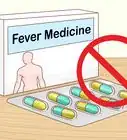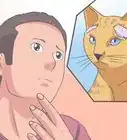This article was co-authored by Ryan Corrigan, LVT, VTS-EVN. Ryan Corrigan is a Licensed Veterinary Technician in California. She received her Bachelor of Science in Veterinary Technology from Purdue University in 2010. She is also a Member of the Academy of Equine Veterinary Nursing Technicians since 2011.
There are 8 references cited in this article, which can be found at the bottom of the page.
wikiHow marks an article as reader-approved once it receives enough positive feedback. This article received 11 testimonials and 91% of readers who voted found it helpful, earning it our reader-approved status.
This article has been viewed 316,589 times.
A stuffy nose can make your cat miserable. You can help your feline friend by first identifying the cause of its stuffy nose. Once you figure out why your cat has a stuffy nose, you can treat it with medication or by letting common infections run their course. You can keep your cat comfortable with steam therapy and by cleaning its nose regularly.
Steps
Providing Care at Home
-
1Look for signs of inflammation. Inflammation of a cat's nose is known as rhinitis, while inflammation of a cat's nasal passages is referred to as sinusitis. Both conditions can cause a stuffy nose. Symptoms of both conditions can include: [1]
- Sneezing
- Discharge from the nose
- Stuffy nose
- Loss of appetite
-
2Recognize common causes of a stuffy nose. There are a variety of factors that can cause inflammation of your cat's nose or nasal passages, leading to a stuffy nose. Common causes include allergies, tumors inside the nose, a foreign object lodged in the nasal passages, parasites, fungal infections, dental abscess, and bacterial or viral infections.[2]Advertisement
-
3Examine your cat for signs of an upper respiratory infection. The herpes virus and calicivirus cause a large percentage of stuffy noses. Signs of these viral infections include discharge from both nostrils that is clear or cloudy, as well as discharge from the eyes.[3]
-
4Let an upper respiratory infection run its course. An upper respiratory infection is characterized by sneezing, watery eyes, clear discharge from the nose, and coughing. If you suspect your cat's stuffy nose is caused by a common upper respiratory infection, you can just let the illness run its course. Most of these infections are short in duration and will clear up on their own within 7 to 10 days.[4]
-
5Clean your cat's nose regularly. You can help your cat manage its stuffy nose by making sure its nose is clean. Wet a cotton ball with water and use it to gently wipe away any mucus from your cat's nose. Do this several times a day while your cat has a stuffy nose.[5]
-
6Try steam therapy. If your cat is chronically congested, steam therapy can help. The warm vapor may help loosen mucus in your cat's nose and nasal passages, making it easier for the cat to breathe. Try taking your cat into the bathroom and closing the door. Turn a hot shower on for about 10 minutes and sit in the room with your cat during this time.[6]
-
7Visit your vet. If your cat is having trouble breathing, you should make an appointment with your vet. A veterinarian can examine your pet and determine why it has a stuffy nose. The vet will perform a dental exam, blood work, and/or a physical examination to determine the cause of your cat's stuffy nose.
Getting Veterinary Care
-
1Look out for bacterial infections. Bacterial infections usually occur because of an underlying condition such as a viral infection, a tumor or polyp in the nasal passage, or a foreign body lodged in your cat's nose. Nasal discharge resulting from a bacterial infection usually occurs in both nostrils and has a pus-like consistency and appearance.[7]
- If your cat has yellow, green, or pus-like discharge coming from its nostrils, it may need to be treated with antibiotics.
- Ask your vet if your cat will need antibiotics for a bacterial infection. It may be better to manage a bacterial infection with supportive care, as overuse of antibiotics can lead to bacterial resistance.
-
2Watch for symptoms of fungal infections. Sometimes a fungal infection is the culprit behind your cat's stuffy nose. Infections caused by the Cryptococcus fungus are the most common. If your cat is suffering from a fungal infection, its face may become asymmetrical and its nasal passages swollen. There will also be nasal discharge that is bloody or resembles pus.[8]
- Let your vet treat a fungal infection with an antifungal medication.
- For example, a Cryptococcus infection is usually treated with fluconazole, itraconazole, or amphotericin B.[9]
-
3Make sure there isn't a foreign body in your cat's nose. It is not uncommon for foreign objects like seeds, blades of grass, or pebbles to get stuck in a cat's nasal passages. This can cause a stuffy nose that often occurs alongside pawing at the face and/or excessive sneezing. Discharge will only be from 1 nostril, not both.[10]
- Let the vet to remove foreign objects from your cat's nose rather than attempting to remove them yourself.
References
- ↑ http://www.merckvetmanual.com/respiratory-system/respiratory-diseases-of-small-animals/rhinitis-and-sinusitis-in-small-animals
- ↑ http://www.petmd.com/cat/conditions/respiratory/c_ct_rhinitis_and_sinusitis
- ↑ http://www.vetstreet.com/our-pet-experts/what-is-wrong-with-my-snotty-kitty
- ↑ http://www.vetstreet.com/our-pet-experts/what-is-wrong-with-my-snotty-kitty
- ↑ https://www.thehonestkitchen.com/blog/helping-your-cat-through-a-feline-upper-respiratory-infection/
- ↑ https://www.austintexas.gov/sites/default/files/files/Animal_Services/Foster_Care_Manual/Feline_Upper_Respiratory_Infection.pdf
- ↑ http://www.vetfolio.com/internal-medicine/feline-focus-update-on-feline-upper-respiratory-diseases-condition-specific-recommendations
- ↑ http://www.merckvetmanual.com/generalized-conditions/fungal-infections/cryptococcosis
- ↑ http://www.merckvetmanual.com/generalized-conditions/fungal-infections/cryptococcosis
About This Article
To treat a cat with a stuffy nose, check its eyes and nose for clear or cloudy discharge, which is a sign of an upper respiratory infection. If your cat has an upper respiratory infection, you can let it clear up on its own within 7-10 days. In the meantime, wipe your cat's nose with a wet cotton ball several times a day to help with the stuffiness. You can also bring it into the bathroom and turn on a hot shower for 10 minutes so the steam clears up its congestion. If your cat is having trouble breathing, or if it has pus-like discharge, take it to the vet for treatment. To learn how to get veterinary care for a cat with a bacterial or fungal infection, scroll down!
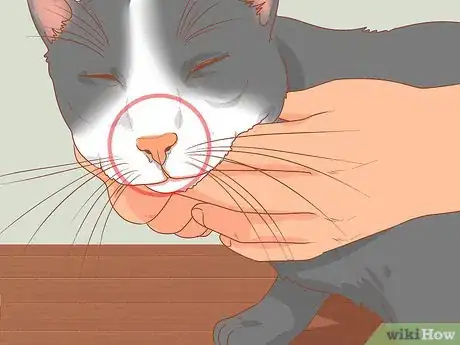
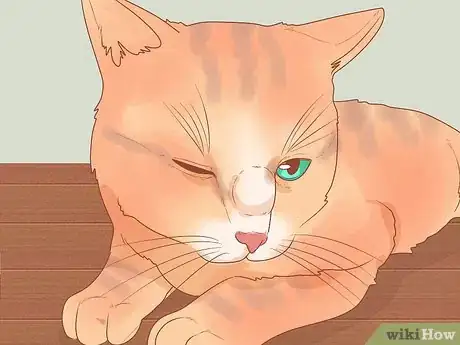
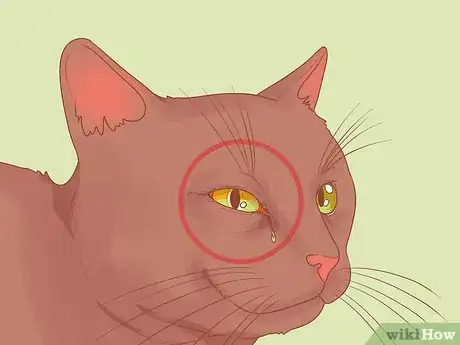

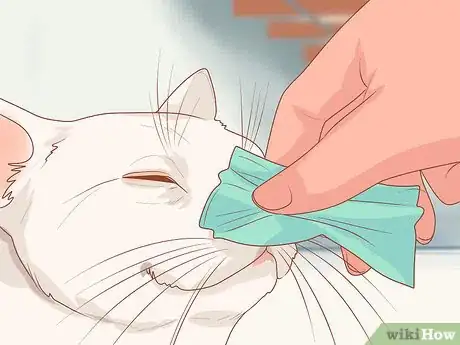
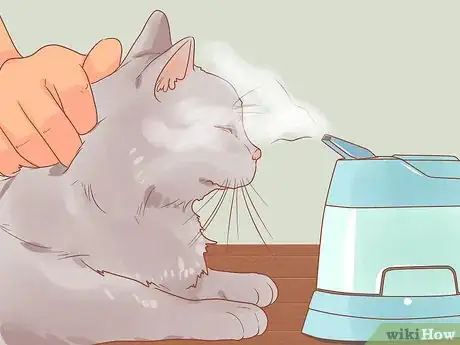

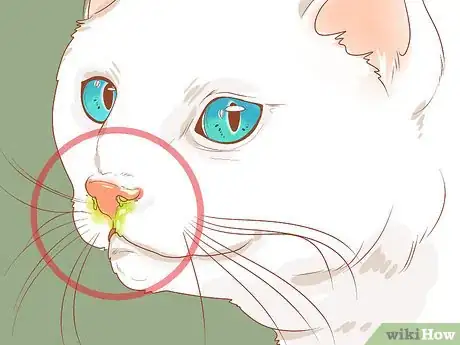
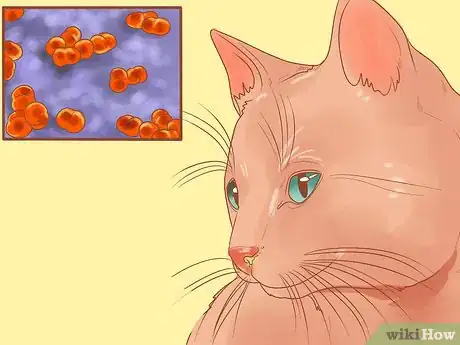
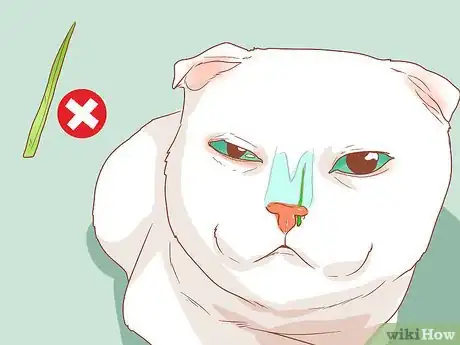
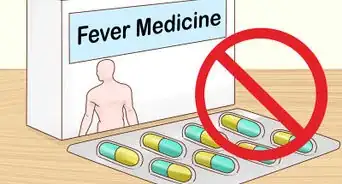
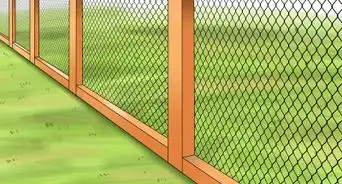


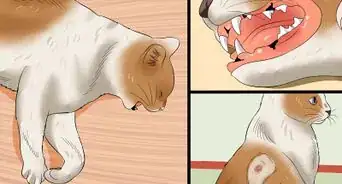

-Step-18.webp)
-Step-12.webp)



-Step-10.webp)









